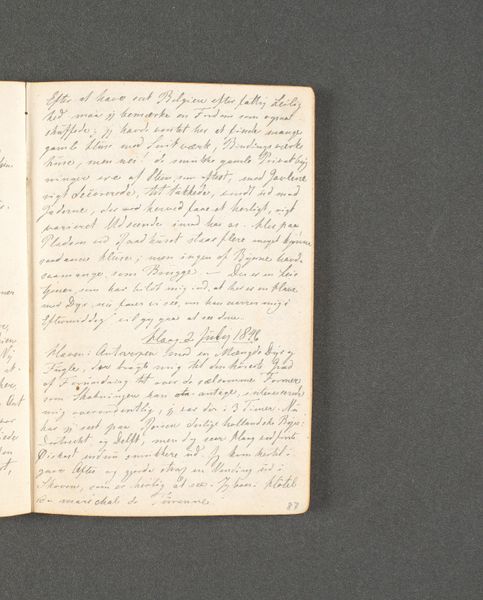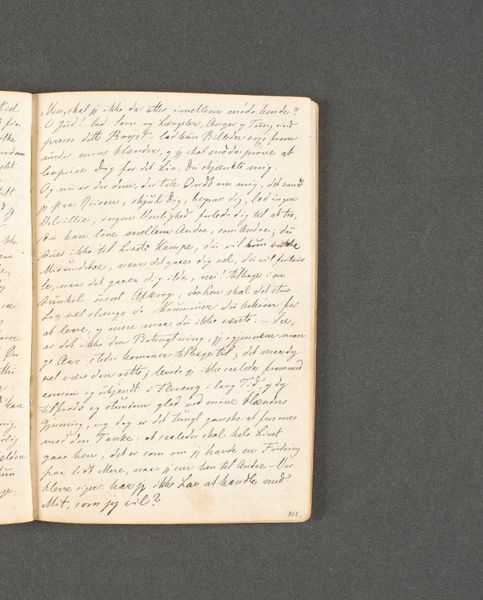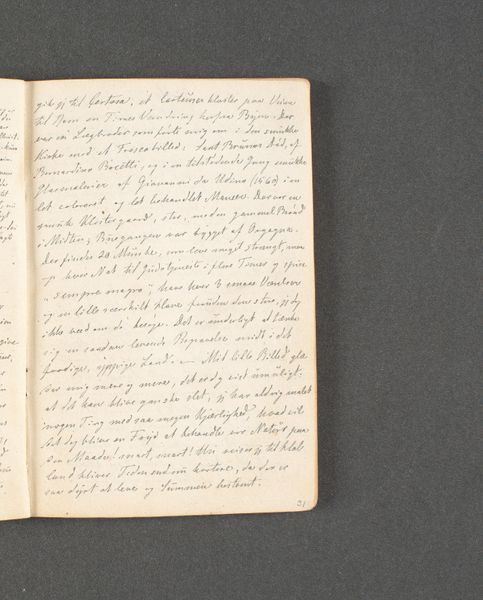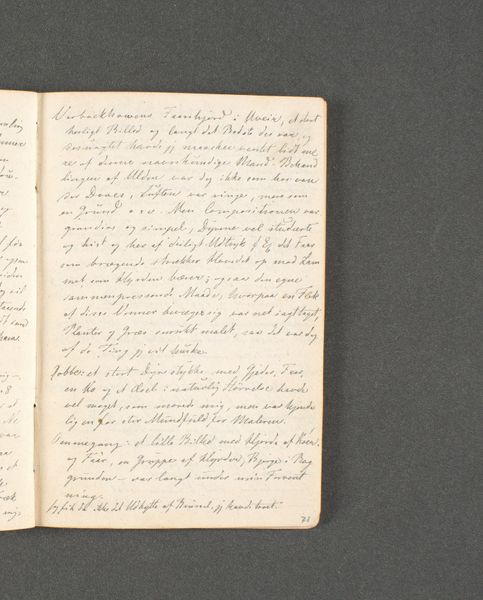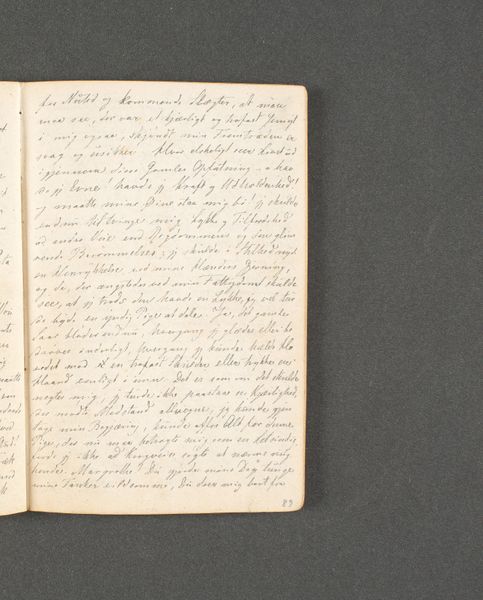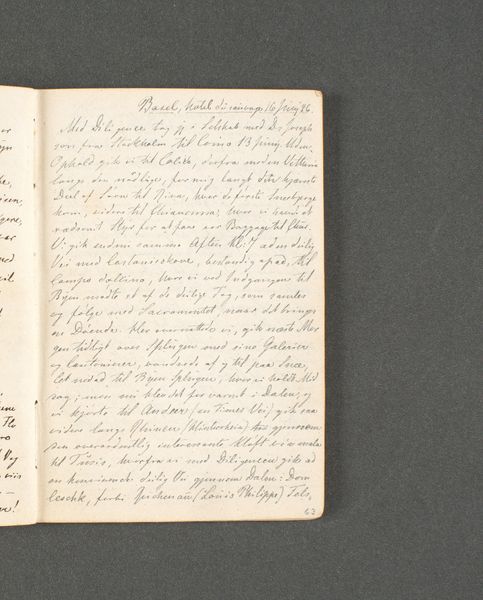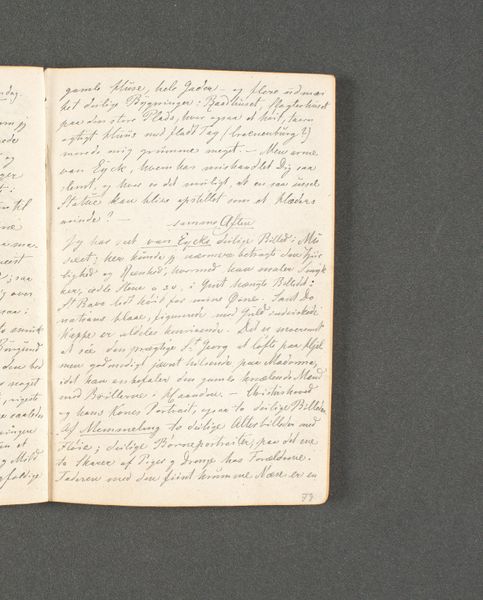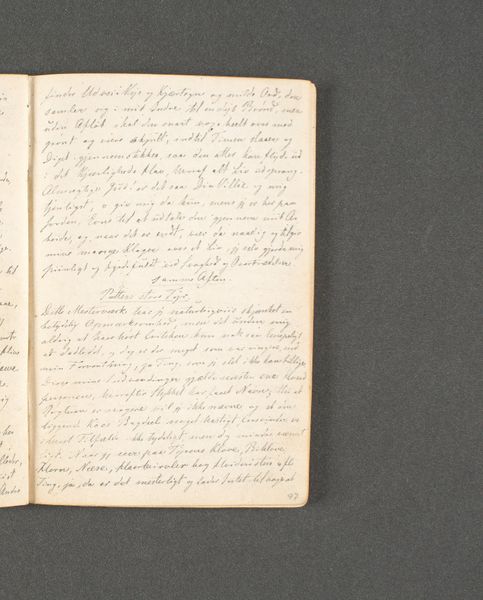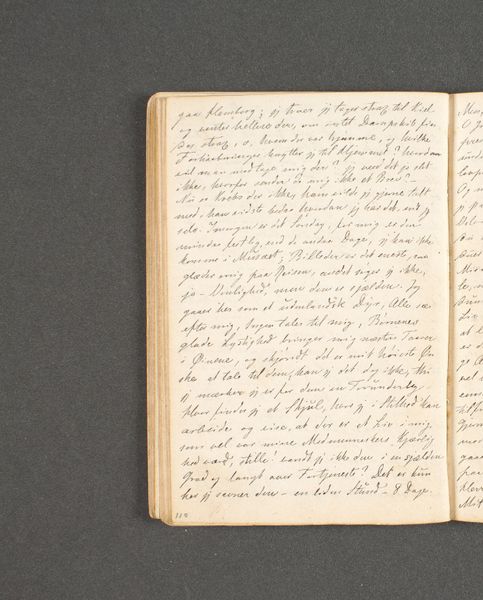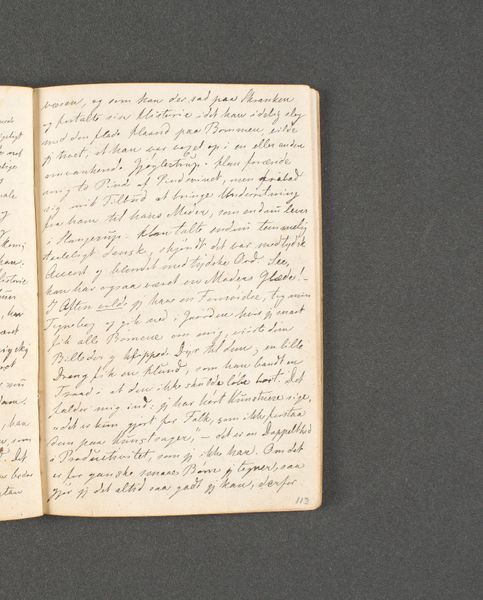
drawing, paper
#
drawing
#
paper
Dimensions: 131 mm (height) x 89 mm (width) (bladmaal)
Editor: Here's "Rejsedagbog. Haag," a drawing on paper created by Johan Thomas Lundbye in 1846. It seems to be a page from a travel journal. I’m immediately drawn to the density of the handwriting and the intimate scale. What cultural memories do you find captured in this journal entry? Curator: It’s interesting that you see it as intimate. I see a public declaration of sorts, even in this small, seemingly private space. Look at how the words are carefully arranged, how the script itself conveys a sense of the author's personality and intention. It is also of interest that the writer feels safe enough in their assumptions of understanding to engage with cultural critique. Editor: A public declaration? That's a fascinating reading. So you are indicating the context surrounding its writing would affect its understanding, its symbolism and use of visual queues? Curator: Precisely! Consider that handwriting itself can act as a symbolic language. Each stroke and curve represents not only a letter but also a reflection of the writer's emotional state, their upbringing, their very identity. The words dance upon the page and draw your attention to cultural critique, as well as political assumptions of safety. Do you not think the assumption of the writer indicates their ability to engage in self-criticism too? Editor: It hadn’t occurred to me to see handwriting as a form of cultural representation. Thank you, that does create an entirely new context to understand it. Curator: Exactly. Looking at art with an awareness of such continuity – from the personal to the political, and the private to public – opens up possibilities in understanding how an image works. The writing reminds me of memory-work.
Comments
No comments
Be the first to comment and join the conversation on the ultimate creative platform.
